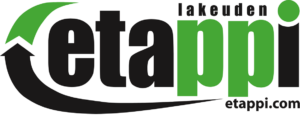Sorting instructions for households
Waste management is based on waste sorting at households where the waste producer sorts recyclable and hazardous waste separately. Non-recyclable combustible waste is sorted into the home’s waste container for utilisation as energy.
Waste sorting instructions of Lakeuden Etappi in a nutshell:
Combustible waste: Waste placed into the home’s waste container is referred to as combustible waste. This type of waste is utilised as energy at the waste power plant. Combustible waste includes food packages, hygiene products, plastic products, textiles and dirty paperboard.
Biowaste: Leftovers and perished food, fruit and vegetable peels, coffee and tea grounds, as well as coffee filters and teabags, egg shells, fish guts and small bones (e.g. steak bones).
Glass: Glass bottles and jars.
Small metal: Pots and pans, and any smaller metal items.
Waste paper: All paper received through the mail slot. Waste paper includes newspapers, magazines, office papers, advertisements, envelopes, phonebooks and paperback books.
Waste paperboard: Milk and juice cartons, other cartons, paper bags (e.g. flour bags), cereal and cookie packages, corrugated board, pizza boxes and egg cartons.
Electronic scrap: All household appliances powered by electricity or batteries. Electronic scrap is accepted at waste stations free of charge.
Large metal waste: For example, bicycles and lawnmowers are accepted at waste stations free of charge.
Hazardous waste: An item or substance removed from use which may cause a specific hazard or damage to health or the environment. Examples include accumulators and batteries, paints, adhesives and washing agents. Small volumes of ordinary hazardous waste produced by households (less than 100 l/100 kg) are accepted at waste stations free of charge.
Landfill waste: Disposed waste which cannot be recycled or utilised as energy.
For more information about sorting, contact: Lakeuden Etappi customer service, tel. +358 6 421 4900

